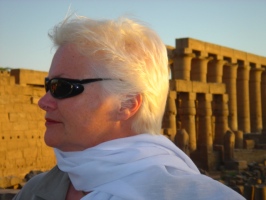Co-written with Elizabeth White. Originally published in LLL US Western Division’s Connections #96, July/August 2001
Wouldn’t it be great if you could show everyone at an event who was attending and where they’d come from? Photo maps create a positive impression and a feeling of togetherness that warm feeling that sometimes only photographs can elicit. You could expand your photo map to include families, co-Leaders, Group, and departments. Your map could be of a county, a state, several states, a Division, a country, the world! Visualize the event in a concrete way: consider creating a photo map. During the TEAM 2000 gathering at Denver University, we were able to do just that!
Ingredients:
• Large map of the geographic area that will include all attendees (city, county, District, Region, Area, United States, world)
• “I Zone†Polaroid camera (about $25–$50)
• Rolls of “I Zone†film (1†high x 5†long self-stick strips). Calculate at least one exposure for each attendee plus about 5–10 extras for experiments and goofs.
• Or perhaps disposable photos attendees bring from home
• Fine-point permanent marker (like a Sharpie)
• Cork board or other wall surface to pin or tape up map. You might also reserve an easel from the facility.
• Push pins, masking tape, scissors
• Table or counter for writing and letting photos dry
• Poster tube for map transport and storage
• Stand-up mirror and plastic combs with event name and date as give-aways for those wanting to spiff up before their photo is taken
Setting up. Attach your map to a wall, side of a vending machine, etc., near registration area in a central location with high traffic. Arrange pens, film rolls, and scissors.
Taking the pictures. Event planners need to schedule the photographers so that they can take pictures of event workers as soon as possible. They will be difficult to catch once attendees arrive. If workers and other attendees know ahead of time, they could also bring photos of themselves that don’t need to be returned.
Have registrars steer attendees to your photo table. A list of attendees would also be helpful to check off names as you do the photos. Even when attendees protested that they were hot and tired, it was our experience that catching them right after registration worked better than trying to reach them later. Patience, a sense of humor, matching name with faces, and looking at other people’s photos helps put everyone at ease.
Standing on a chair or riser can improve a head shot. Try to position camera person above the person to be photographed, thus emphasizing the eyes and not the chin and neck. Photograph at a distance of no more than three to four feet, but continue to assess your final photos, adjusting your camera positioning accordingly.
Positioning photos. Remove the film strip and lay it on a flat surface, letting it dry for five minutes. Indicate the person’s map location (such as “SE corner Arizonaâ€) on the side of the film strip and then add a small dot on the map itself to position it later. When the photo is dry, peel off he backing, cut out the head shot to a desired size, and attach it to the map.
If many conference goers come from one location, you might position that cluster of photos in an area with no attendees (such as a lake or ocean) and indicate the actual area with an arrow.
Viewing the geography of your Region, Area, Division, or Group in this way is fascinating. You can see how far someone has traveled to your event. And you can get a strong impression of how many people participated. Also, as you see clusters of Leaders in certain parts of the state or Division, you might also see voids in certain regions. The visual impact of noticing a certain pocket of the state where there is no LLL representation can be powerful.
Later photo opportunities during the event. Take the map to other event gatherings and mealtimes to look for photo opportunities for latecomers and busy conference workers. We heard a rumor that even an Area Event Coordinator will sometimes sit down and eat.
After the event. Arrange for someone to be in charge of storage of the map. She can then bring the map to other gatherings. For instance, attendees at an Area gathering or International Conference might have fun looking at photos from their last Area Conference. You can also have a copy shop reduce the map as a souvenir of the event, as an item in a drawing, or for reproduction in an ALL of other publication (See “Photo Map of TEAM 2000 Attendees,†Connections #92, November/December 2000.)

One Comment